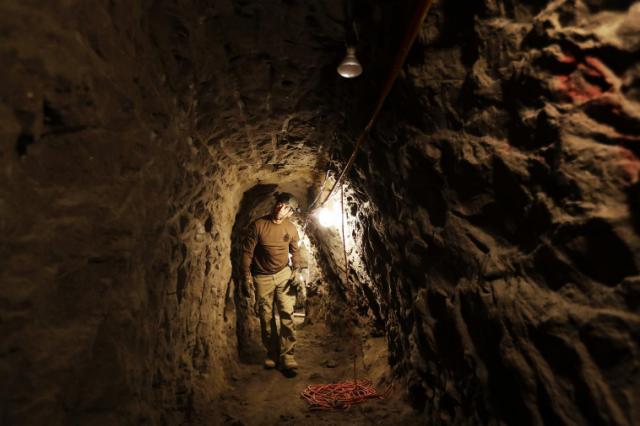Associated Press reporter Elliot Spagat, in collaboration with writers Julie Watson in San Diego, CA and Luis Alonso Lugo in Washington DC, tell us about the infraworld of narco-tunnels underneath the Mexican – American border.
They are known in the U.S. Border Patrol as “tunnel rats” — agents who go in clandestine passages that have proliferated on the U.S.-Mexico border over the past 20 years to smuggle drugs.
The Associated Press joined the Border Tunnel Entry Team, as it is formally known, inside an incomplete tunnel that was discovered in San Diego in 2009 — 70 feet deep, 3 feet wide, 2,700 feet long and equipped with a rail system, lighting and ventilation.
Here are some questions and answers about the team’s work:
HOW MANY TUNNELS ARE THERE?
Authorities discovered 224 border tunnels originating in Mexico from 1990 to March 2016, including 185 that entered the United States, according to the latest U.S. Drug Enforcement Administration annual survey. Many are shallow holes, but some are elaborately constructed with hydraulic lifts, water pumps and rail cars.
The vast majority are in Arizona, where smugglers connect to underground drainage canals in Nogales, and in California, where construction noise generates less attention amid warehouses of an industrial area of San Diego, across from densely packed homes and businesses in Tijuana.
WHAT ARE THEY FOR?
Tunnels are generally used for multi-ton loads of marijuana because the drug’s bulk and odor are difficult to conceal for motorists and pedestrians who enter the United States at official border crossings, the preferred method for smuggling methamphetamine and heroin.
In 2015, authorities seized cocaine in connection with two California tunnels, including one that ran underwater from a house in Mexicali, Mexico, to the All-American Canal near the city of Calexico.
The tunnels, which the DEA generally attributes to Mexico’s Sinaloa cartel, cost between $1 million and $2 million to build and take months to complete, said Chris Davis, supervisory special agent with U.S. Immigration and Customs Enforcement’s Homeland Security Investigations. That investment quickly pays off with profits from smuggling if crews escape detection, he said.
Click here for full article
Source: https://www.yahoo.com/


